Coastal Home Insurance: 9 Big Mistakes By Homeowners
Coastal Home Insurance isn’t a choice—it’s a necessity for someone who lives along the ocean. Be it a Florida beach house, a Gulf Coast vacation home, or a North Carolina beach cottage, regular home insurance won’t cover coastal hazards such as hurricanes, storm surges, and flood. Without adequate coverage, one storm may cause financial ruin.
Most homeowners wrongly believe their standard policy will suffice. Coastal homes need specialized insurance that covers specific regional perils and requirements. This guide exposes 11 expensive blunders individuals make with Coastal Home Insurance—and how you can steer clear of them.
Table of Contents
11 Big Mistakes Homeowners Often Regret
1. Not Knowing What Coastal Home Insurance Does Cover
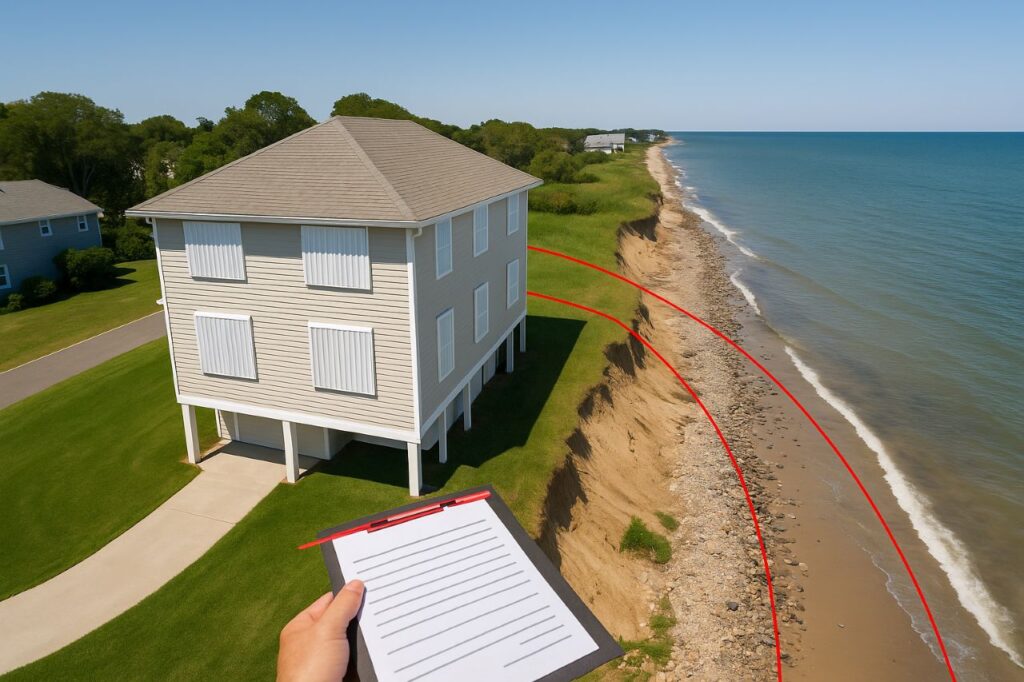
General Coverage vs. Coastal Home Insurance Requirements
One of the most prevalent—and expensive—errors homeowners commit is expecting their basic home insurance policy will cover them in coastal areas. The truth is that the majority of standard policies do not cover important coastal threats, including flooding, hurricanes, and windstorms. If you reside by the ocean or are in a hurricane zone, relying on minimum coverage can put your home seriously underinsured.
Coastal Home Insurance is intended to cover these gaps. It generally covers:
- Windstorm coverage – For loss due to powerful, destructive winds typical of coastal storms.
- Hurricane protection – Including wind-blown rain and structural damage during named storms.
- Increased dwelling replacement limits – To cover higher construction costs and more stringent building codes closer to the coast.
- Flood insurance endorsements – Optional but necessary, often supported by the National Flood Insurance Program (NFIP).
Without such special coverage, homeowners’ risk is being left to bear thousands—or even hundreds of thousands—of losses following a devastating storm.
Real-World Example
Following Hurricane Ida’s hit on Louisiana in 2022, numerous coastal homeowners were left with huge repair bills. Those who had standard policies learned that wind and flood damage were not covered, resulting in financial ruin. Policyholders who had comprehensive coastal coverage, however, were fully or partially compensated for structural damage, water intrusion, and debris removal—demonstrating the critical difference in protection.
Tips to Avoid This Costly Mistake
- Read your policy exclusions: Check particularly for “named storm,” “windstorm,” and “flood” exclusions.
- Call your insurer: Don’t guess. Ask if hurricane and windstorm damage is covered—and at what deductible.
- Shop around: Insurers such as State Farm, GEICO, and Allstate write specialized coastal home insurance policies. Shop around for multiple quotes for more comprehensive coverage and the best price.
- Purchase flood insurance separately: Your home may not be in a FEMA-flood zone, but it’s still at risk near the coast.
2. Ignoring Flood Insurance Requirements
Why Flood Coverage Matters
- Coastal flooding is one of the most ravaging and overlooked hazards for homeowners. Anywhere from one inch of water in your house can lead to more than $25,000 in damages, as per the Federal Emergency Management Agency (FEMA). Notwithstanding, numerous coastal residents think that their regular homeowner’s policy covers flooding—but it doesn’t.
- Flood loss is specifically not covered in the majority of homeowners’ insurance policies. This leaves homeowners themselves to cover repairs, replacements, and temporary relocation costs in the event of a flood.
- Both from storm surge, rain, or high tides, the threat of damage from flooding in coastal regions is just too high to overlook.
Mandatory Flood Zones
- Most coastal properties are situated within FEMA Special Flood Hazard Areas (SFHAs). If you have a mortgage backed by a federal agency and your property sits in one of these high-risk areas, you will be forced to buy flood insurance, normally from the National Flood Insurance Program (NFIP).
- However, even if your property lies outside of a high-risk zone, you’re not immune to flooding. In fact, FEMA reports that over 20% of flood claims come from homes outside of SFHAs.
Tips to Avoid This Costly Mistake
- Check your flood zone: Use the FEMA Flood Map Service Center to determine your property’s flood risk and understand your insurance requirements.
- Purchase flood insurance even if not mandatory: Don’t just count on flood zone designations. Flooding can occur anywhere—it only needs one bad storm.
- Consider private flood insurance: Although the NFIP is the most typical choice, private insurers tend to have higher limits, quicker payments, and extra coverage such as temporary housing or protection for basement contents.
- Review waiting periods: NFIP policies usually have a 30-day waiting period before coverage begins. Plan ahead and do not wait until a storm is near.
By not getting flood insurance, coastal homeowners risk taking a gigantic gamble with their money. Wind coverage protects your house, but it takes more than that to protect your house—flood insurance is necessary for genuine peace of mind.
3. Selecting the Wrong Type of Deductible
Flat vs. Percentage-Based Deductibles
- One of the most widely misinterpreted factors of Coastal Home Insurance is the deductible type on your policy—particularly when it comes to hurricanes and windstorms. Most homeowners are unaware that coastal deductibles tend to vary from those of regular policies and can lead to significantly larger out-of-pocket expenses.
- The majority of inland policies have a fixed deductible (say, $1,000 or $2,500), yet numerous coastal home insurance companies charge a percentage deductible from hurricane or windstorm damage. This percentage comes from your dwelling’s insured amount, not from the storm loss.
Example
If you have a 5% hurricane deductible on a $400,000 house, you’ll owe $20,000 out-of-pocket before your insurance pays up. This may leave you with a financial risk if there is storm damage—particularly if you weren’t ready for such a hefty bill.
Windstorm Deductible Traps
- Another difficult spot: individual deductibles for windstorms and hurricanes. Some policies have them defined as such, with windstorm deductibles activated even for unnamed storms or higher gusts. Others kick in only during “named storms” (as the National Weather Service defines them).
- Most homeowners believe they only have one deductible, only to discover that various deductibles exist for various types of wind occurrences, each perhaps higher than anticipated. Worse, these deductibles tend to be buried in fine print.
How to Avoid This Error
- Compare deductibles with your agent: Ask for a side-by-side comparison of flat versus percentage deductibles and see when each kicks in.
- Understand your state’s regulations: Refer to the NAIC Storm Deductible Guide to determine how your state treats hurricane and windstorm deductibles.
- Weigh risk and affordability: The higher the deductible, the lower your premium but the greater your out-of-pocket risk. Select a deductible that you would be able to pay if a large storm were to hit.
Understanding your deductible type is critical for budgeting storm recovery costs. Don’t wait until disaster strikes to find out you’re under-insured—review your deductible now to avoid painful surprises later.
4. Underestimating the Real Cost of Rebuilding
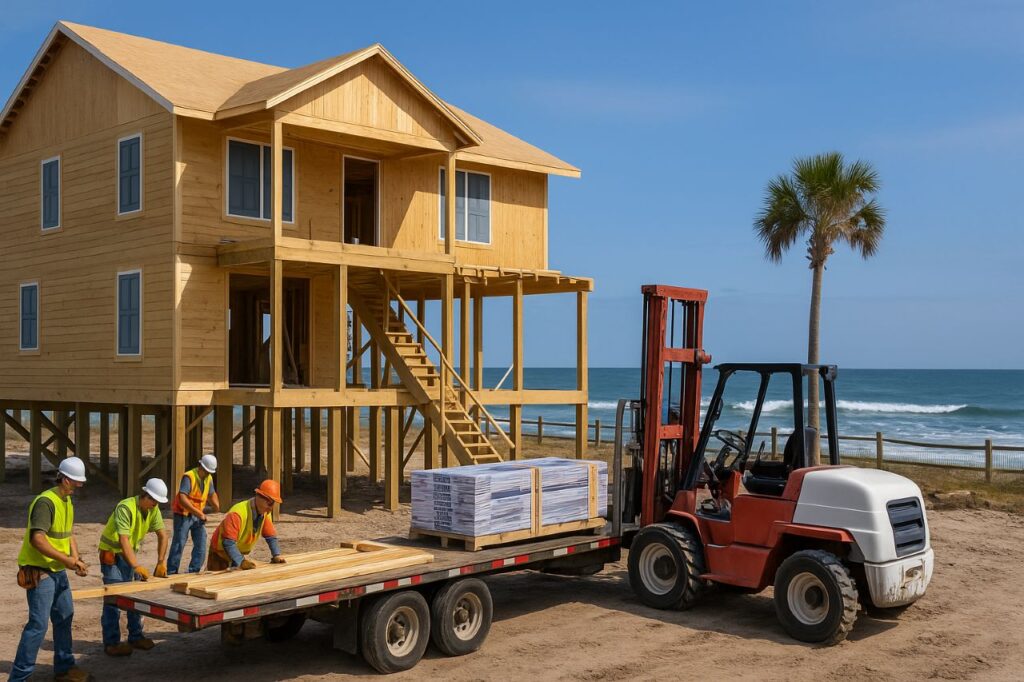
Replacement Cost vs. Market Value
- One of the most financially perilous errors a homeowner can commit—particularly along the coast—is to insure the home for its market value, not its replacement cost. Although market value indicates what your house might sell for in today’s real estate market, replacement cost is the price it would cost to rebuild the house from the foundation up with the same materials, labor, and construction techniques.
- In most beach towns, replacement cost dwarfs market value, especially in post-disaster situations when labor and material demand surges sky-high. If your residence is insured for its sale value rather than its cost to rebuild, you might be looking at tens—or even hundreds—of thousands in losses not covered by insurance after a hurricane.
Inflation and Supply Chain Impact
Following hurricanes, floods, or tropical storms, rebuilding expenses soar because
- Limited supply of construction materials
- Shortages of skilled labor
- Overloaded local contractors causing delays
- Surge pricing during recovery
The COVID-19 pandemic and recent natural disasters have demonstrated the vulnerability of supply chains, driving prices for lumber, drywall, and roofing up by 20% to 40% or more. Without sufficient insurance coverage that accounts for inflation, you could be left paying the shortfall.
Tips to Avoid This Mistake
- Get an annual re-estimate: Have your agent re-estimate your home’s replacement cost annually, particularly if you upgrade or local building codes are updated.
- Incorporate inflation protection: Select a policy with extended or guaranteed replacement cost coverage that will make adjustments for inflation after a disaster.
- Apply rebuild cost estimators: Online calculators such as HomeAdvisor’s True Cost Estimator or Craftsman Book’s Building Cost Calculator can assist you in projecting a more accurate rebuild amount.
- Account for code upgrades: In most places, rebuilding involves compliance with new, more stringent building codes, which can add to the cost.
Underestimating rebuild costs can create catastrophic financial shortfalls after a disaster. To ensure your coastal property is fully protected, ensure your insurance takes into account what it will cost to rebuild—not what it’s worth today.
5. Overlooking Policy Exclusions and Limitations
Common Exclusions in Coastal Home Insurance
There’s an old insurance adage: “What’s excluded is often more important than what’s included.” That’s particularly the case with coastal home insurance, where typical policies have many exclusions that leave homeowners underinsured if they don’t pay attention to the fine print.
Some of the most common exclusions in coastal home insurance policies are:
- Mold, rust, and rot: Usually viewed as maintenance problems and not as a sudden, unintentional loss.
- Earth movement: Covers earthquakes, sinkholes, and landslides—none of which are generally insured unless you add a separate endorsement or policy.
- Sewer or drain backups: These unseemly and expensive occurrences generally need a special rider or backup endorsement to be insured.
Numerous homeowners wrongly think these are part of their base policy until they have an unexpected disaster—then they’re stuck paying out-of-pocket.
Limitations That Can Bite
Even if you have a risk covered, limitations or sub-limits in the policy can easily cut into your payout. Coastal home insurance will usually have:
- Limits on personal property: Total limits may be less than what your belongings are actually worth.
- Sub-limits for high-end items such as:
- Electronics (e.g., $2,500 limit).
- Jewelry and watches (for example, $1,000 per item).
- Watercraft or sporting equipment (extremely limited coverage, if any).
Should you have a hurricane or storm loss and require replacement of these items, the standard limits could be way too low.
Avoid This Mistake
- Read the full policy: Don’t just skim the summary. Request a full copy of your policy and read through exclusions, sub-limits, and definitions. Ask your agent for clarification if anything is unclear.
- Add endorsements for valuables: Schedule high-value items like wedding rings, cameras, and boats with specific limits through riders or floater policies.
- Consider umbrella insurance: This gives you wider liability coverage and can assist in safeguarding assets that are beyond the limits of your main home insurance.
- Look for water backup coverage: Including this inexpensive endorsement can save you thousands of dollars in cleanup and repair expenses.
By ignoring exclusions and sub-limits, you can end up being underinsured when it matters most. Take the time to read through every aspect of your coastal home insurance policy—and tailor it to your real-world requirements.
6. Not Bundling with Wind and Hurricane Policies
Separate Policies in Some States
- One of the most common mistakes of coastal home insurance planning is thinking wind and hurricane coverage are included as part of your regular homeowners policy. In some of the higher-risk coastal states, like Texas, Florida, and portions of Louisiana, that is not usually the case.
- Because of the high likelihood of wind-related claims, most insurers exclude hurricane or wind damage from basic home insurance policies in such areas. Rather, they force homeowners to buy a special windstorm policy from state-sponsored or private insurers.
Example:
In Texas, homeowners in the coastal region frequently must buy windstorm coverage through the Texas Windstorm Insurance Association (TWIA). Likewise, in Florida, coverage can potentially be secured through the Citizens Property Insurance Corporation or a specialty wind carrier. Without these policies, hurricane-caused wind damage could be entirely excluded—exposing homeowners to six-figure losses.
Cost-Saving Bundles
Most insurance companies today sell bundled policies that include home, wind, and even flood insurance in one package. Doing so:
- Lowers premium fees with multi-policy discounts.
- Streamlines the claims process by placing all coverage with a single company.
- Reduces gaps in coverage that can result from handling separate policies.
Bundling is particularly useful following a big storm, when managing claims across multiple insurers is a logistical nightmare.
Tips to Avoid This Mistake – Coastal Home Insurance
- Inquire about bundling plans with your insurer: Even if your company does not provide bundled coverage, they might have affiliates or partners.
- Employ comparison tools: Policygenius and Insure.com allow you to compare bundled and individual pricing and determine the optimal bundles for your area.
- Check policy overlap and exclusions: Make sure all policies coordinate—don’t have two policies exclude what the other does not completely cover.
- Time your renewals: Synchronizing policy dates prevents lapses or uneven deductibles.
Not bundling wind, flood, and home insurance can result in costly gaps in coverage and delayed claims. Bundling not only saves you money but also provides peace of mind when dealing with the complicated risks of coastal living.
7. Dependence on NFIP Alone Too Much
NFIP Limitations
The National Flood Insurance Program (NFIP) has been the default choice of homeowners in flood zones, particularly those in FEMA Special Flood Hazard Areas (SFHAs). But depending entirely on NFIP coverage can have you woefully underinsured, especially for high-end coastal properties.
NFIP policies strictly limit coverage:
- $250,000 on the structure/dwelling.
- $100,000 on personal contents.
- No coverage for temporary living costs if your home becomes uninhabitable.
- No protection for basement contents unless specifically stated—and even then, it’s extremely limited.
These limits have not risen in decades, even with inflation, increasing home values, and rising construction costs. For coastal homeowners, particularly those whose homes are worth more than $500,000, NFIP by itself is not enough to cover the loss completely after a disaster.
Private Flood Insurance as a Strong Alternative
Over the past few years, private flood insurance has become a strong alternative—or even substitute—for NFIP coverage. Private insurers provide:
- Increased dwelling limits (typically $1M+ or tailored).
- More comprehensive personal property coverage.
- Loss-of-use and temporary housing benefits.
- Basement and additional living space coverage.
- Quicker claim payments in most situations.
Some private policies also provide shorter waiting times (as few as 7–15 days compared to NFIP’s 30-day wait) and optional business interruption coverage for mixed-use properties.
Avoidance Tips – Coastal Home Insurance
- Obtain quotes from private flood insurers: Compare quotes from carriers such as Neptune Flood, TypTap, or Chubb—if your home value is above NFIP thresholds.
- Utilize brokers specializing in coastal home insurance: They can customize a flood policy that combines NFIP and private coverage for optimal protection.
- Compare side-by-side benefits: Consider beyond cost—assess coverage limits, claims service, and added features such as extra living expenses and contents in basements.
Relying solely on NFIP leaves risky gaps in your coastal flood coverage. Check out private markets and layered policies to see that your house, property, and lifestyle are all covered when disaster strikes.
8. Not Factoring in Erosion and Land Loss
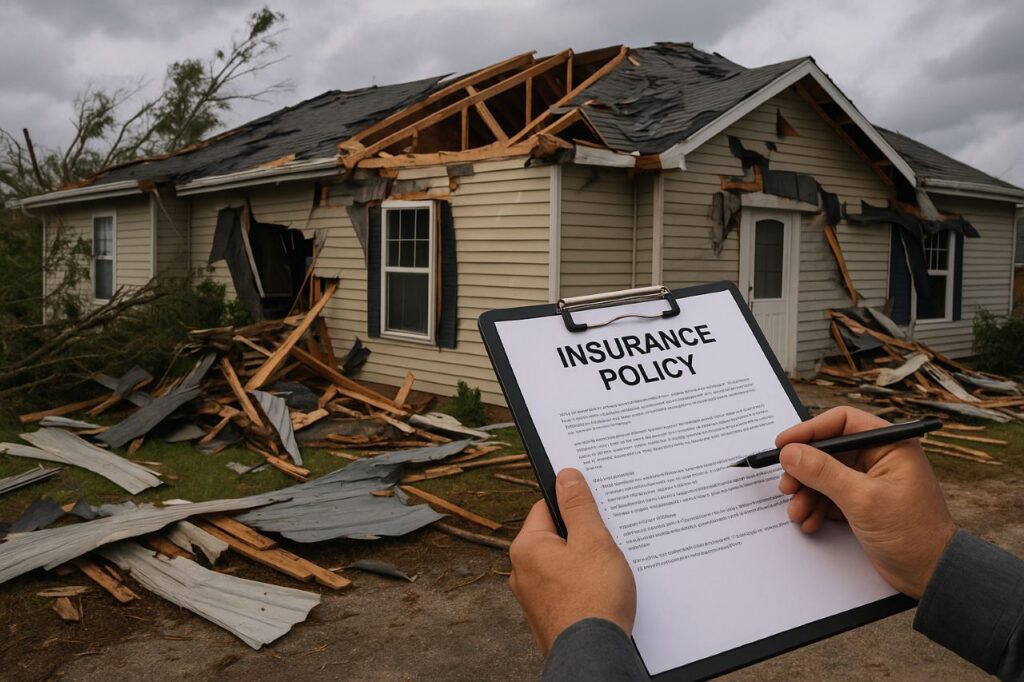
Why Land is Important in Coastal Home Insurance
- Most individuals buying or insuring a coastal home care about the house but not about the land that it is built on. Nevertheless, coastal erosion—the steady loss of beach by wave action, storms, and sea-level rise—can shrink your property drastically, its value, and even its insurability.
- Most homeowners are unaware that land loss is not covered by insurance. If erosion washes away a portion of your land, that land is lost—and the insurers won’t cover it to be replaced. Worse still, if erosion shifts your house closer to the waterline, it might no longer meet local building codes, zoning laws, or insurer standards, which can result in policy cancellation or disallowed claims.
Real Example: Cape Cod
On Cape Cod, Massachusetts, erosion has redrew shore property lines, and some homeowners were stunned to discover that their once-insurable homes are no longer insurable. In others, whole decks, sheds, and sections of houses collapsed into the ocean because of shoreline retreat. Without careful land and erosion planning, these homeowners were faced with tens of thousands in uninsured losses and litigation over property boundaries.
Tips to Avoid This Mistake
- Keep track of erosion in your location: Utilize tools such as the NOAA Shoreline Mapper to monitor historical and forecasted shoreline changes.
- Discuss erosion clauses: Sit down with your insurance agent and discuss whether your policy has clauses dealing with erosion or land movement. Certain policies have language specifically excluding coverage in cases where erosion is a causative factor.
- Take a geologic survey: When purchasing or constructing along the coast, a geotechnical survey will assist with examining land stability, risk of erosion, and mitigation measures required.
- Look at floodplain and zoning maps: Governments usually release maps of flood and erosion hazard areas that may influence building rights and insurance premiums.
Overlooking erosion risk can compromise your home’s structural integrity, resale value, and insurability. By thinking ahead and knowing your land’s vulnerability, you can safeguard both your investment and your peace of mind.
9. Assuming Renters or Tenants Are Insured
Landlord or Tenant Liability
- Most coastal residents incorrectly assume their homeowners or coastal insurance policy has renters who occupy the property. Sadly, it doesn’t. If you rent out your house—either for a long-term rental or a vacation rental—you require rental property insurance (landlord insurance) that is crafted to address the special risks associated with renting your home.
- Whereas the coastal homeowners policy can insure the physical building, it will not insure the personal items of the tenant, for example, clothing, furniture, electronics, and valuables. It also often won’t replace lost income when the building renders the premises unfit for occupancy via a hurricane or flood.
Liability Coverage Oversight
- Another significant threat coastal landlords encounter is liability exposure. If a tenant, guest, or service employee is hurt on your property when a storm occurs—e.g., from collapsing debris or water damage—you can be held financially and legally responsible for medical bills or legal claims.
- Without personal liability coverage or landlord-specific liability insurance, you may need to pay out-of-pocket for injuries, property loss, or lawsuits due to storm-related hazards.
How to Prevent This Blunder – Coastal Home Insurance
- Need renter’s insurance: Include it as a term of the lease that tenants need to have their own renters insurance. This helps protect their belongings and could even lower liability exposure for you, the landlord.
- Raise your personal liability limits: Particularly in higher-risk neighborhoods, consider raising liability limits or investing in an umbrella policy for wider coverage.
- Add loss-of-rent coverage: If a hurricane or flood renders your rental property uninhabitable, this coverage assists in paying lost rental income during repairs.
- Switch to a rental property policy: Discuss with your insurer switching your homeowners policy to a landlord or dwelling fire policy that covers coastal risks and storm-specific endorsements.
Insuring a beach rental house takes more than regular home insurance. Customizing your policy for landlord use guarantees complete protection—for your investment, as well as your income.
Final Thoughts: Safeguard Your Coastal Home the Proper Way

Coastal home insurance is not another line item on your budget—it’s a critical investment in your well-being, financial security, and sense of peace. From hurricane deductibles to erosion hazards, coastal homeowners are confronted with distinctive dangers that need specialized coverage.
By skipping these 11 common coastal home insurance blunders, you can help your policy reflect the real cost of rebuilding, include key coverages such as wind and flood, and provide the complete amount of protection your property is worth. The most important thing to do is to remain proactive—review your policy each year, know exclusions and deductibles, and not procrastinate when hurricane season arrives.
Ready to Protect Your Coastal Home?
Begin comparing quotes today from highly rated coastal home insurance companies such as State Farm, GEICO, Chubb, and Allstate.
Ensure your coverage is designed for where you reside—and for what’s on the horizon.
Also Read: Amco Home Insurance: 7 Surprising Benefits Homeowners Can’t Ignore
Frequently Asked Questions
What is coastal home insurance, and how is it different from standard home insurance?
Coastal home insurance is designed specifically for properties near the coast, offering coverage for windstorms, hurricanes, and higher flood risks — which are usually excluded from standard home insurance policies.
Does coastal home insurance include flood protection?
Not always. Most policies require separate flood insurance, either through the National Flood Insurance Program (NFIP) or a private insurer. Always confirm with your provider.
What is a hurricane deductible, and how does it work?
A hurricane deductible is a percentage-based deductible (usually 2–5%) applied when damage results from a named storm. It’s calculated based on the home’s insured value — not a flat amount.
Is private flood insurance better than NFIP?
Private flood insurance often offers higher coverage limits, basement protection, and additional living expenses — features NFIP doesn’t include. It’s ideal for homeowners needing broader protection.
Can I bundle coastal home insurance with flood and windstorm policies?
Yes, many insurers offer bundling options that combine home, flood, and windstorm coverage — saving money and simplifying claims.

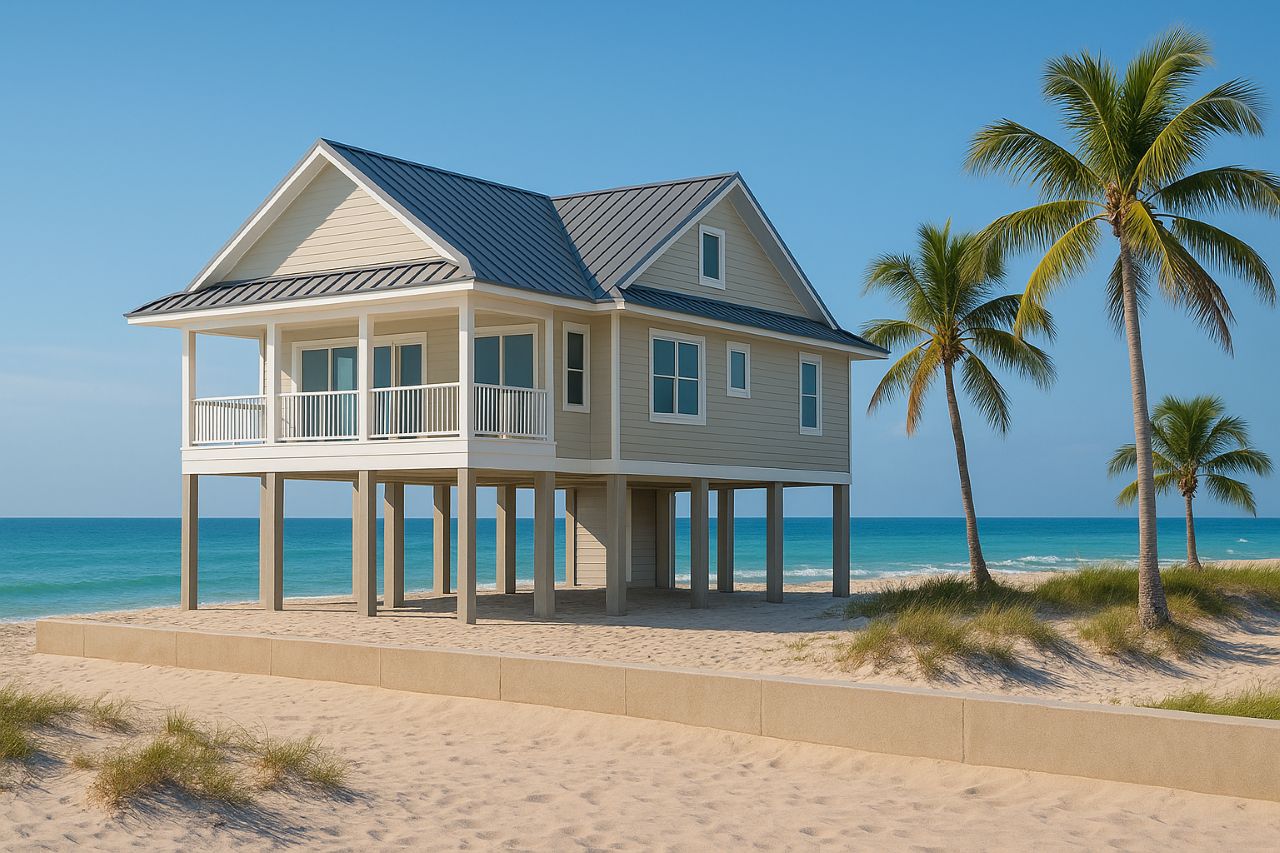



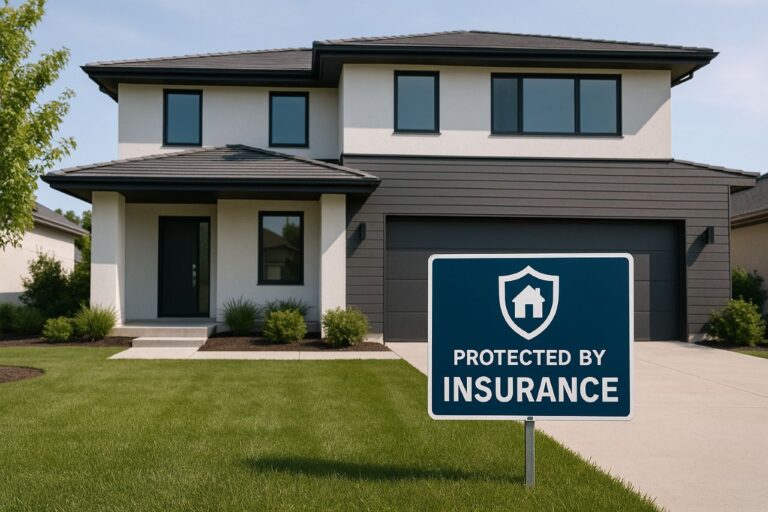


2 Comments